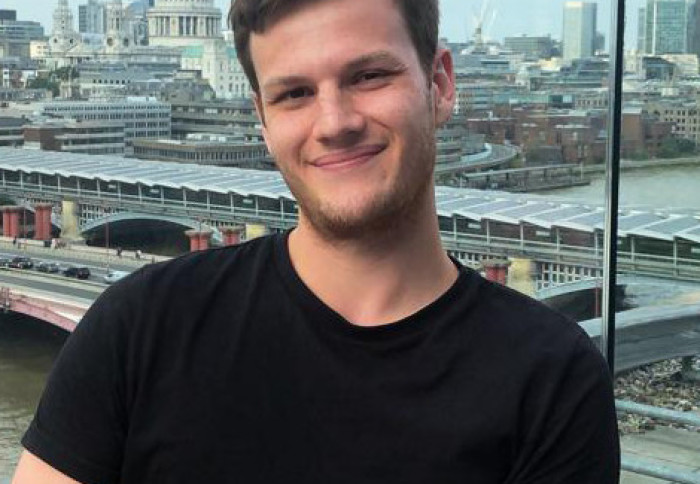

A five minute Q&A with Sustainable Gas Institute researcher Luke Dubey.
Luke Dubey did his undergraduate degree in physics at the University of Bristol before embarking on a MSc in Environmental Technology course at the Centre for Environmental Policy at Imperial College. In this short 5 minute Q&A, Luke talks about the Master’s and also his research project at the Sustainable Gas Institute analysing greenhouse gas emissions data from satellites.
1. Why did you decide to do the Masters in Environmental Technology?
Firstly, I wanted to work in a job where I am helping to mitigate climate change. I also wanted to choose a course that would help direct my career. Thirdly, the course was at one of the most prestigious universities in the world, and energy policy is something that has always interested me. I find the challengers associated with energy systems particularly interesting. For example, how do we decarbonise heat and the electricity sector, and what problems may arise from integrating renewables, and how do we solve them.
2. What is your Master’s project?
The research project involved using satellite data to track methane emissions from natural gas supply chains. I was under the supervision of Dr Paul Balcombe. We looked at satellite from Sentinel 5P which was launched by the European Space Agency in 2017. All the data collected by the satellite is freely available for research. My project involved examining how much methane is emitted by combining satellite data and meteorological data within a transport model.
3. Why is examining methane emissions so important?
Methane is the second most important greenhouse gas after carbon dioxide. This is due to its far higher global warming potential, meaning each kilogram of methane warms the globe as much as 80 times more than a kilogram of CO2. Therefore understanding how this is emitted and how much is emitted can have huge impacts. Small changes in the amount of methane emitted can have a big effect due to the high global warming potential. Methane is also emitted at ever increasing rates, partly due to the switch from coal to natural gas, which was done largely to slow climate change, but if more methane is emitted form natural gas than we currently predict it may not be the green switch we currently believe it is.
4. What was the first step?
The first step was to pick a suitable location to examine. This area must have a methane inventory to compare my results to, along with lots of natural gas facilities and good weather. Once this place was chosen, I could run my model to compare how much methane I predicted was being emitted to what the inventories predicted. Finally, we had to work out why there was a difference between the different data sets, and what the reasons were for these differences.
5. What will be the output from your research?
The main take away from the research was highlighting where there is missing data and then to develop methods to predict how to collect the data.
6. Would you say that this research, is quite unique?
It’s not new, but the analysis has never been done using this satellite. Most studies do not look at changes over a 24-hour period, but this data has higher detail and resolution. These types of satellites have been around since the early 2000s but the data for this satellite is at a much higher resolution (97km versus 50km in range).
7. How did you find out about the project? Why were you interested in it?
Dr Balcombe sent out an email with five or six options of research projects, and I really liked this one. We then spoke through it in more detail, and I felt that it had real-world implications. This is because currently measuring methane emissions from the natural gas supply chain is uncertain and unreliable. Adding another reliable dimension to these calculations would completely change the game, and allow for quick validation of predictions. This is also a new field, with very little work carried out in it, meaning any work I undertook would be breaking new ground.
8. What motivated you to work in the area of energy research?
Energy is required for a happy, healthy life in the modern world. Supplying everyone worldwide with clean cheap energy would solve so many issues humankind currently faces. However, with such rewards the road to achieve it is fraught with problems and complications. I want to help solve these problems and navigate through the complications. Research is also the first step to understanding the problems we face and bringing forward solutions to these, and this is what motivated me to work in the energy research sector.
9. Did you enjoy the MSc and your time at Imperial College?
I think the course is very well-run, and all the expert in the field giving lectures were passionate and had sound knowledge.
10. What would you like to do next?
I’d ideally like to work at BEIS. This is largely due to wanting to make a change on the national scale. It would also allow me to combine quantities research with the policy making skills I have learned throughout this course.
Article text (excluding photos or graphics) © Imperial College London.
Photos and graphics subject to third party copyright used with permission or © Imperial College London.
Reporter

Zara Qadir
Department of Earth Science & Engineering

Contact details
Email: press.office@imperial.ac.uk
Show all stories by this author


